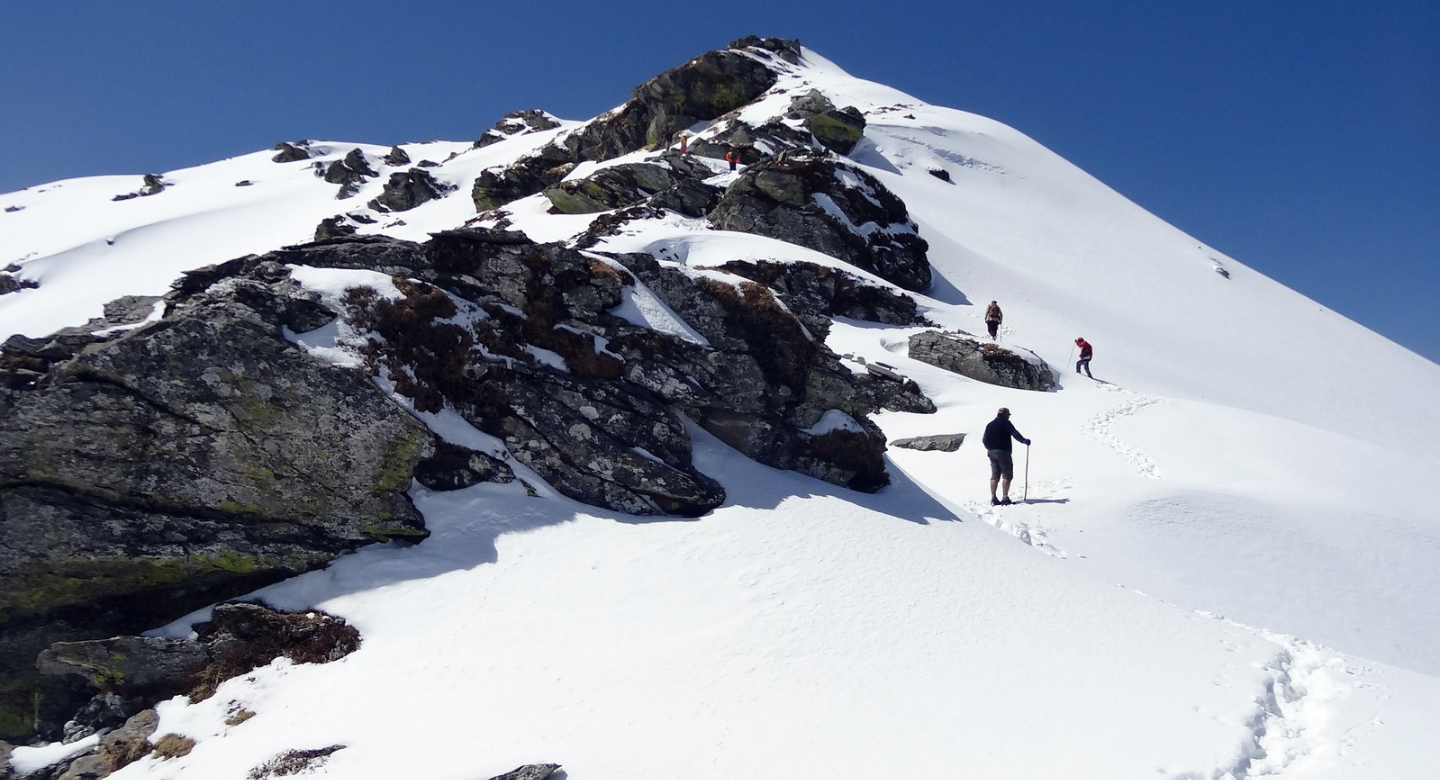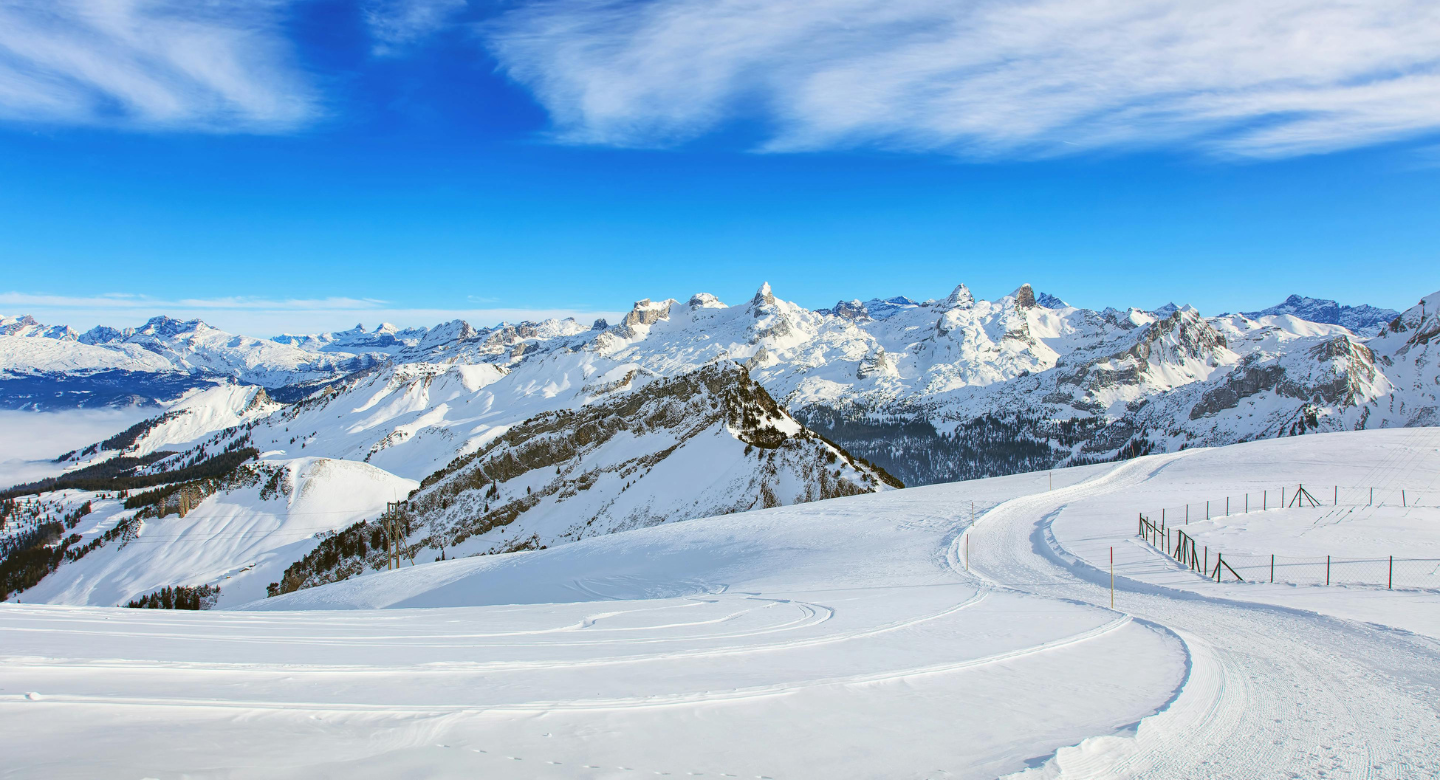
10 Must-Visit Places for Spiritual Trekking Adventures in India

Trekking is often regarded as a physical adventure that brings individuals closer to nature. However, spiritual trekking transcends the physical aspect, offering a profound journey into the soul. It fosters a deeper connection with the mind and a sense of alignment with higher energies. This unique combination of physical activity and spiritual awakening has become increasingly popular among adventurers seeking inner peace and enlightenment.
Spiritual trekking appeals to people across all age groups, as it provides an opportunity to find clarity and address doubts within their minds. This transformative experience not only rejuvenates the spirit but also inspires individuals with renewed energy for their future endeavors.
What is Spiritual Trekking?
Spiritual trekking combines the physical act of trekking through peaceful and often blessed settings with soul-nourishing activities like meditation, mindfulness, and reflection. These routes usually lead to spiritually significant regions, such as old temples, monasteries, or spots thought to be filled with magical energy. Unlike ordinary trekking, spiritual trekking emphasizes both the inside path of self-discovery and the outside experience of nature's beauty.
Why Do People Engage in Spiritual Trekking?
People go on spiritual journeys for many reasons:
-
To Seek Peace:
In today’s fast-paced world, spiritual trekking provides an opportunity to disconnect from the chaos and discover inner tranquility. It helps purify the mind, clearing away negative thoughts and fostering mental clarity.
-
To Connect with Nature:
Trekking through pristine, untouched landscapes cultivates a deep appreciation for the natural world and fosters a sense of harmony. The colors, sounds, and changing seasons of nature have a profound ability to resonate with the human mind, creating a lasting connection.
-
For Self-Discovery:
Spiritual treks often serve as a journey of self-reflection, allowing individuals to explore their purpose in life. They provide answers to self-doubt, build confidence, and inspire a greater understanding of oneself.
-
To Experience Sacred Spaces:
Walking in the footsteps of sages and visiting sites of religious and historical significance can be a transformative experience. These sacred spaces are believed to enhance positive energy flow, rejuvenating both the body and the mind.
Benefits of Spiritual Trekking
Mental Clarity and Stress Relief:
The meditative aspect of spiritual trekking helps declutter the mind and alleviate stress. It combines the calming effects of nature with practices like mindfulness and meditation, creating a powerful remedy for mental well-being.
Physical Fitness:
Trekking through challenging terrains not only improves physical endurance but also enhances mental resilience. To fully enjoy this experience, it is recommended to engage in small fitness training and physical preparation beforehand.
Enhanced Spiritual Awareness:
Exploring sacred places and immersing in spiritual traditions deepen one’s connection with personal beliefs. Activities like meditation and prayer in these tranquil environments foster peace, dispel negativity, and rejuvenate both body and mind.
Renewed Perspective on Life:
Spiritual trekking often instills a sense of gratitude and humility, providing a fresh perspective on life’s priorities. It encourages introspection and a greater appreciation for the journey of life.
Community and Cultural Exposure:
Trekking through spiritually rich regions offers travelers the chance to engage with local communities and learn about their traditions and stories. These experiences connect trekkers with the spiritual essence of the place, spark creativity, and inspire meaningful reflections.
Popular Spiritual Trekking Destinations in India
-
Kedarnath Trek, Uttarakhand
The Kedarnath Trek offers a breathtaking journey through rugged terrains, dense forests, and snow-capped peaks. The walk concludes at the Kedarnath Temple, one of Lord Shiva's twelve Jyotirlingas located in the beautiful Himalayas. This sacred journey invites pilgrims to immerse themselves in spiritual devotion and the divine serenity of the temple’s surroundings.
-
Amarnath Yatra, Jammu & Kashmir
The trek to the Amarnath Cave is an awe-inspiring adventure through picturesque valleys and challenging terrains. Inside the cave, a natural ice Shivling forms annually, attracting devotees from across the globe. This pilgrimage symbolizes unwavering faith and a deep connection to Lord Shiva.
-
Parashar Lake Trek, Himachal Pradesh
This serene trek leads adventurers to a pristine high-altitude lake surrounded by snow-capped mountains. At the lake’s edge stands an ancient temple dedicated to Sage Parashar, renowned for its unique architecture. The tranquil setting and spiritual aura make this trek a perfect retreat for introspection and peace.
-
Adi Kailash Trek, Uttarakhand
Often referred to as "Chhota Kailash," this trek takes adventurers through the scenic landscapes of Kumaon, passing waterfalls and lush valleys. It serves as a spiritual alternative to the Kailash Mansarovar Yatra, offering stunning views of Mount Adi Kailash. The journey holds deep spiritual significance as it mirrors the revered Kailash pilgrimage, fostering divine connection.
-
Vaishno Devi Trek, Jammu
This popular trek ascends through scenic paths to the revered shrine of Mata Vaishno Devi, situated in the Trikuta Mountains. Pilgrims often experience a sense of unity and devotion as they chant and walk together. The journey embodies faith and divine blessings, with the temple being a major spiritual landmark.
-
Hemkund Sahib Trek, Uttarakhand
The Hemkund Sahib Trek takes trekkers through vibrant meadows and serene alpine landscapes. It leads to a sacred Sikh gurudwara at a glacial lake, reflecting the peaks around it. This holy site offers spiritual solace and inspires faith in the hearts of all who visit.
-
Phugtal Monastery Trek, Ladakh
This trek winds through the rugged terrains of Zanskar Valley to the remote Phugtal Monastery, perched on a cliffside. The monastery’s dramatic location offers breathtaking views and a sense of timeless peace. Its spiritual essence lies in its history of Buddhist teachings and meditative ambiance.
-
Kinner Kailash Trek, Himachal
The trek to Kinner Kailash takes adventurers through dense forests and charming villages, offering spectacular views of the Kinnaur range. The highlight is reaching the sacred Shivling Peak, a revered site for devotees of Lord Shiva. This spiritual journey combines natural beauty with deep religious significance, inspiring awe and devotion.
-
Satopanth Lake Trek
The Satopanth Lake Trek takes adventurers through the rugged landscapes of the Garhwal Himalayas, surrounded by towering peaks like Neelkanth, Chaukhamba, and Balakun. The emerald-green, triangular lake is a pristine wonder, perched at an altitude of 4,600 meters. This sacred lake is believed to be visited by the Holy Trinity—Brahma, Vishnu, and Shiva—adding profound spiritual significance to the journey, making it a pilgrimage of immense faith and serenity.
-
Chopta Chandrashila Trek, Uttarakhand
The Chopta Chandrashila Trek leads through lush meadows and dense forests to the Tungnath Temple, the world’s highest Shiva temple. At the summit, Chandrashila Peak offers panoramic views of Himalayan ranges. This trek is both a physical and spiritual ascent, enriching the soul with its serene beauty and divine connection.
How to Prepare for a Spiritual Trek
-
Physical Fitness:
Prepare for the physical demands of trekking in hilly or mountainous regions by building your endurance and strength. Research the trek’s duration and difficulty level to match your capabilities. Beginners should opt for easy treks lasting 1 to 2 days. Focus on exercises that strengthen your legs, such as walking, stair climbing, or targeted workouts, to ensure you're ready for the journey.
-
Spiritual Preparation:
Familiarize yourself with the spiritual significance of your destination and its associated customs and stories. Engage in meditative practices to center your mind and open yourself to new experiences. Starting meditation before your journey can deepen your connection with the place and prepare you for the transformative aspects of the trek.
-
Gear Up:
Pack light, prioritizing essential trekking gear such as sturdy shoes, weather-appropriate clothing, and basic supplies. Bring a journal for introspection—it can help you reflect, build gratitude, and dispel negativity. Carrying less not only reduces physical strain but also aligns with the simplicity often associated with spiritual journeys.
-
Respect Local Culture:
Respect the traditions, beliefs, and practices of the communities you encounter. Take time to understand their customs to foster genuine connections. Always seek permission before photographing people or rituals and avoid behavior that might disrupt their practices. Showing respect enhances the spiritual experience for both you and the locals.
Conclusion
Spiritual trekking is a unique journey that harmonizes the mind, body, and spirit. It offers a refreshing escape from routine life while fostering a connection with nature and oneself. Whether you’re seeking solace, enlightenment, or a blend of adventure and spirituality, India’s spiritual trekking trails promise a transformative experience. So, lace up your trekking boots, embark on the path of self-discovery, and let the trails guide you to inner peace.
Frequently Asked Questions (FAQs) on 10 Must-Visit Places for Spiritual Trekking Adventures in India
What is spiritual trekking?
Spiritual trekking is a journey that combines trekking through natural landscapes with practices like meditation, mindfulness, and introspection, often focusing on destinations of spiritual significance such as temples, monasteries, or sacred sites.
How is spiritual trekking different from regular trekking?
Unlike regular trekking, which emphasizes physical adventure, spiritual trekking focuses on the inner journey, mental well-being, and connection with nature. It often includes meditative or reflective practices.
Do I need to follow a specific religion to go on a spiritual trek?
No, spiritual trekking is open to everyone, regardless of religious or spiritual beliefs. The focus is on personal growth, self-discovery, and experiencing peace.
What are the benefits of spiritual trekking?
Benefits include mental clarity, reduced stress, improved physical health, enhanced spiritual awareness, and a deeper connection with nature and oneself.
Do I need prior trekking experience for spiritual trekking?
Not always. Some spiritual treks, like Vaishno Devi or Parashar Lake, are suitable for beginners, while others, like the Kedarnath Trek or Amarnath Yatra, may require moderate to advanced trekking experience.
What should I pack for a spiritual trek?
Essentials include:
-
Comfortable trekking gear (shoes, clothing, backpack).
-
A journal for reflection.
-
Water and light snacks.
-
Basic first-aid kit.
-
Any spiritual or meditative tools you may use, like prayer beads or a yoga mat.
Are there specific seasons for spiritual trekking?
Yes, the best time for spiritual trekking depends on the destination. For example:
-
Kedarnath Trek: May to October.
-
Amarnath Yatra: July to August.
-
Valley of Flowers Trek: July to September.
Always check the weather and trail conditions before planning.
Can I undertake spiritual trekking solo?
Yes, but it depends on the trek’s difficulty and location. Solo trekking can offer deeper introspection but might require extra preparation and safety measures.
Are there organized spiritual trekking tours in India?
Yes, many travel companies and local organizations offer spiritual trekking tours, often guided by experts familiar with the cultural and spiritual aspects of the destination.
What are the costs associated with spiritual trekking?
Costs vary depending on the destination, duration, and whether it’s self-organized or part of a tour. Expenses generally include transportation, accommodation, food, permits, and guide fees, if applicable.
Scoutripper
Related content
Interdum et malesuada fames







